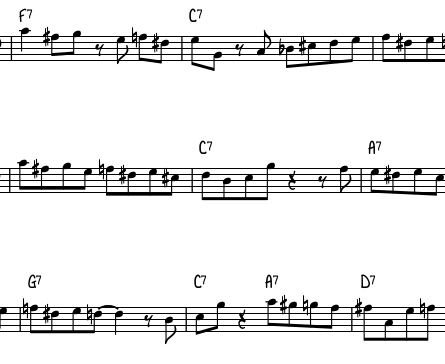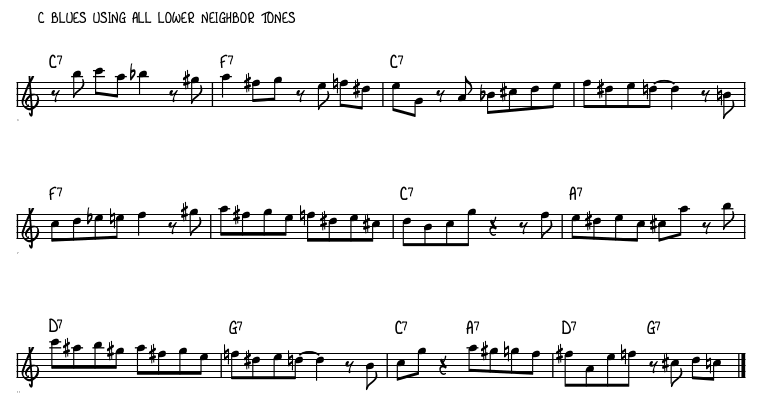The Magic of Chromatics for Technique and Improv Vocabulary
 One of the most bewildering things for people learning to improvise can be how to add chromatic notes into their playing. We often learn chords and scales, but simply knowing them doesn’t make us able to play the colorful and interesting notes that make up the solos of so many of the greats, as well as the great classical music of the last four centuries.
One of the most bewildering things for people learning to improvise can be how to add chromatic notes into their playing. We often learn chords and scales, but simply knowing them doesn’t make us able to play the colorful and interesting notes that make up the solos of so many of the greats, as well as the great classical music of the last four centuries.
[And before we go further, some of you might have read my first article about lower neighbor tones, which only introduced lower neighbor tones for each basic chord tone. If you’re unfamiliar with what a lower neighbor tone is, make sure to read that article first!]
Some of you might have learned some of your so called “bebop scales”, which incorporate passing tones between some of the scale tones, but here’s a simple way to help you start getting some more chromatic notes into your playing by using lower neighbor tones on all the notes of the scale.
And in order to begin, all you need to know are your basic major and minor scales… Let’s start with a descending C major scale. Now, play the note a half step below each note in the scale before each note in the scale, which will go something like this:
- B -> C
- A# -> B
- G# -> A
- F# -> G
- E -> F
- D# -> E
- C# -> D
- B -> C
If you’re near a piano or keyboard, play the corresponding major triad and hold the pedal down while you do this on the horn (or just do both on the piano), and something amazing will happen. You’ve played all twelve notes over a basic triad, and it actually sounded good! We’re often taught that those chromatic notes are wrong notes, but use them as neighbor tones and it’s a very different story… This is the magic of chromaticism these notes outside of the scales add so much of the color that we strive for in our playing and hear in the music of so many of our heroes.
Once you’re comfortable with it, try incorporating this simple pattern into your playing. Below is a chorus of C blues that is made of up from this simple idea. Once you feel you have a good grasp of the concept, feel free to try writing out your own solos over any chord changes you like to play.
(Click here to download this music into a much more readable PDF format)

As always, do this exercise with all your major and minor your minor scales, and if you want to make it more interesting rhythmically you can try playing it in triad groupings as well.
Enjoy!
Study with Sam
Sam Sadigursky is currently offering online lessons through Skype and private lessons in NYC. He has given improvisation clinics across the U.S., is a regular guest professor at Hunter College, and currently performs internationally with Darcy James Argue’s Secret Society, Folklore Urbano, and others. To find out more, visit SamSadigursky.com.





